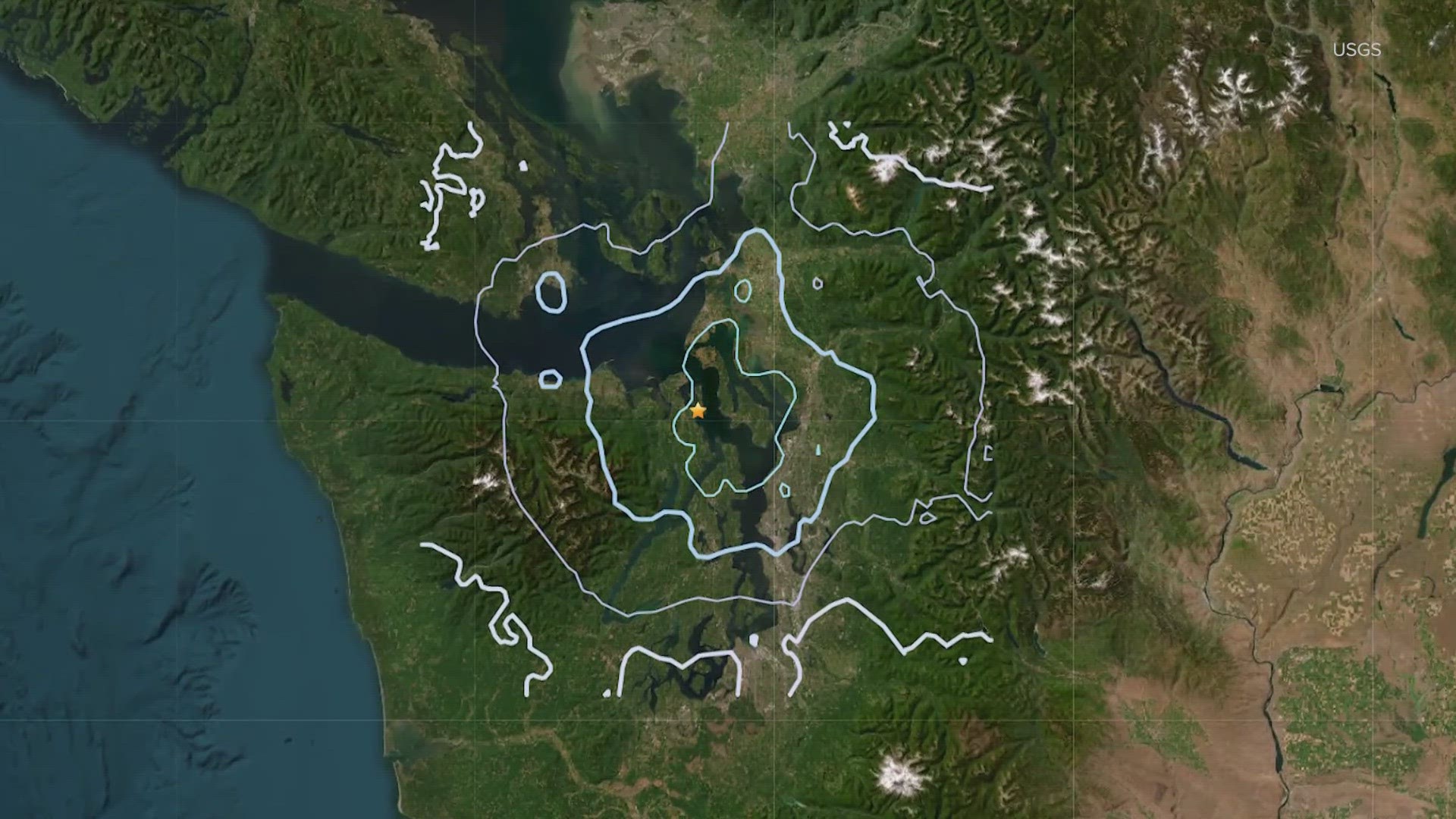SEATTLE — From Canada to Olympia – a rumbling shook western Washington on Sunday night.
"Suddenly somebody jerked the couch really violently," said Ranate Hartog, manager of Pacific Northwest Seismic Network at the University of Washington. "It felt like but it was brief and it took a second but it was like, 'Oh it’s an earthquake.'"
Hartog not only felt the earthquake, but she’s studying it.
The earthquake's epicenter was near Marrowstone Island which is close to Port Townsend and Whidbey Island. It happened just after 7:20 p.m.
Researchers inside UW's Pacific Northwest Seismic Network lab have been analyzing earthquakes like Sunday's, which left no reported damage.
"Nobody felt really strong shaking even though it might have been exciting," Hartog said.
The latest earthquake was below the threshold for sending an alert, Hartog said. If the quake exceeded magnitude 5 an alert would have given people near the epicenter a five seconds heads up. In the Seattle area, it would have been 11 seconds.
Moments that would help people register what’s happening and find a secure place to take cover.
"This earthquake was caught really quickly by the shake alert system but it correctly estimated the magnitude and the magnitude estimate it got was 4.2 and that was below the threshold for public alerting," Hartog said.
But with Sunday’s earthquake researchers saw that the alert system does work and it’s able to give at least a few seconds heads up.
"It depends a lot on where you are in respect to where the earthquake starts," Hartog said. "We don’t actually predict the earthquake, what we do is the system very quickly detects the earthquake and then it warns people ahead of the shaking arriving at people’s locations."
This earthquake is a reminder that a larger one could happen and people should be prepared.
"This kind of earthquake is great for us to be able to practice all of that because they don’t happen very frequently," Hartog said.
The earthquake was felt as far north as Vancouver, British Columbia, and as far south as Olympia because it was a deep earthquake that happened about 35 miles below the surface. Deep earthquakes can be felt in a larger radius even if they’re not necessarily causing damage.
According to the Pacific Northwest Seismic Network, earthquakes in the Pacific Northwest states of Washington and Oregon result from slip-on faults in a variety of geographic and geologic settings.
Earthquakes in much of the region are a consequence of stresses associated with the motion of the Juan de Fuca Oceanic Plate to the northeast with respect to the North America Continental Plate at a rate of several centimeters per year.
Experts said an earthquake of this size happens every few years. The most recent one was in 2020.
"I really see an earthquake like this as a wakeup call for all of us," said Harold Tobin, director of the Pacific Northwest Seismic Network. "A reminder that we live in earthquake country."

